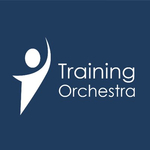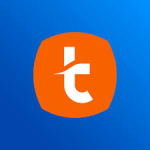List of Best Course Management Software
Showing 10 of 41 productsAdobe Captivate Prime is an advanced learning management system designed to help organizations deliver effective and engaging training programs. With a user-friendly interface and powerful features such as customizable content, advanced reporting, an...Read Adobe Captivate Prime Reviews
Simplilearn is a global online learning platform that provides high-quality training and certification programs in fields such as digital marketing, data science, project management, and more. With a strong focus on practical, industry-relevant skill...Read Simplilearn Reviews
Training Orchestra is a state-of-the-art software designed to streamline and enhance your organizations training processes. With its innovative features and user-friendly interface, Training Orchestra empowers businesses to efficiently manage their e...Read Training Orchestra Reviews
Arlo Training Providers offers a revolutionary training management software that simplifies and streamlines the entire process, from registration to evaluation. With their efficient solution, training providers can focus on delivering high-quality co...Read Arlo Training Providers Reviews
Valamis is a leading software providing personalized learning and development solutions for organizations of all sizes. With its innovative features and user-friendly interface, Valamis is revolutionizing the way companies train and develop their emp...Read Valamis Reviews
Udemy is more than just a platform, its a community. With an array of online courses in various subjects, Udemy empowers people to learn and grow from the comfort of their own home. Whether youre looking to learn a new skill or advance your career, U...Read Udemy Reviews
TalentLMS is a and innovative online learning platform that streamlines the process of training and development for businesses of all sizes. With user-friendly features design, it offers a seamless learning experience for both teachers and learners...Read TalentLMS Reviews
Violet LMS is a learning management system designed to revolutionize the way organizations train and develop their employees. With its user-friendly interface features, Violet LMS streamlines the learning process and empowers businesses to achieve th...Read Violet LMS Reviews
Learnyst is a online platform that offers a unique learning experience for students and instructors alike. With its user-friendly interface is a course management tools, Learnyst is dedicated to helping instructors create engaging, interactive, and p...Read Learnyst Reviews
Trainual is a business solution for streamlining and organizing your employee training process. Created to simplify and automate training procedures, Trainual offers an efficient and user-friendly platform for creating and managing standardized train...Read Trainual Reviews
- What Is Course Management System?
- Top Reasons Why Businesses Need Course Management System?
- What Are the Top Key Features of Course Management System?
- What Are the Top Benefits of Course Management System?
- What Are the Steps to Choose the Right Course Management System?
- What Are the Types of Course Management System for Different Industries?
- What Are the Technology Trends for Best Course Management System?
- What Are the Deployment Options for Course Management System?
What Is Course Management System?
The Course Management System (CMS) is a commonly utilized software tool that facilitates online instruction for educators to effectively teach students. Additionally, it is employed in the facilitation, distribution, and administration of instructional materials.
The course management software is a component of the broader Learning Management System (LMS). The system encompasses several characteristics and resources employed in the creation of instructional content, including the organization of content and the arrangement of learning activities.
Course management software encompasses a range of tools that facilitate the evaluation of student assessments, provision of feedback, monitoring of student progress, and generation of course reports.
The Content Management System (CMS) facilitates communication between professors and students through various digital means such as email, discussion forums, video conferencing sessions, and other web-based applications.
Educators can provide various educational resources to their students, including but not limited to course materials, handouts, syllabi, lecture notes, and homework assignments, thereby ensuring universal accessibility to these instructional materials.
Students can access these materials at their convenience, peruse the documents, and retrieve any accompanying attachments. The utilization of a Content Management System (CMS) optimizes the course management procedure for educators through the implementation of automated grading, evaluation, and feedback mechanisms.
Instructors can upload quizzes or assessments onto the best course management system, whereupon the system will automatically evaluate the quiz and furnish students with their respective scores.
Additionally, this feature enables educators to monitor the progress of students, which becomes particularly advantageous in the context of online courses where students are engaged in remote learning.
In summary, online course management software offers educators a streamlined method for effectively organizing and disseminating educational materials to their pupils. The utilization of this instrument plays a significant role in the dissemination of online course materials and the provision of prompt feedback to students.
Top Reasons Why Businesses Need Course Management System?
1. To reduce administrative burden: Course management systems (CMS) are important in optimizing administrative functions associated with course organization, curriculum development, task allocation, and other pertinent procedures.
2. To create engaging learning experiences: The online course management system facilitates the creation of dynamic and engaging learning experiences for students by instructors.
3. To facilitate faculty collaboration: Course management systems facilitate enhanced collaboration among faculty members and administrators in the creation and management of courses.
4. To streamline communication: Course management software plays a crucial role in enhancing communication among faculty members, students, and administrators, hence enabling seamless sharing of information across all parties involved.
5. To keep track of student progress: It facilitates teachers in monitoring student progress and delivering feedback on student performance.
6. To improve student engagement: An online course management system provides instructors with the ability to personalize their courses and utilize digital resources to enhance student involvement.
7. To facilitate remote learning: Course management systems (CMS) provide educators with the ability to create and deliver courses from any geographical location. This holds particular significance for educators who are required to conduct remote instruction.
8. To evaluate student performance: It offers instructors a range of tools that enable them to assess student performance and deliver constructive comments aimed at enhancing their learning outcomes.
9. To organize online discussion forums: Online course management software offers educators a range of tools that enable them to establish virtual discussion rooms, facilitating student interaction and fostering collaborative learning.
10. To manage digital resources: Top course management software offers educators a range of tools that facilitate the organization of digital materials, including videos, photos, documents, and many other files, so ensuring convenient accessibility.
11. To store and backup data: It offers instructors a secure means of storing and safeguarding their data.
12. To create a learning portal: Course management systems (CMS) facilitate the creation of a centralized online platform by instructors, which allows students to conveniently access course materials, assignments, and supplementary resources.
13. To generate analytics: Top course management software offers instructors a range of tools that enable them to gather and evaluate data about student performance in their courses.
14. To personalize learning experiences: The best course management system provides instructors with the ability to individualize and tailor learning experiences for their students.
15. To promote collaboration: Course management systems (CMS) offer educators a range of tools that facilitate collaboration and communication among various stakeholders.
What Are the Top Key Features of Course Management System?
The top key features of the course management system include the following:
1. Course Enrollment: This functionality enables users to do searches and register for courses based on their interests and preferences.
2. Course Planning & Scheduling: Online course management systems provide users with the ability to strategically design and organize courses, as well as effectively schedule them. Additionally, CMS allows users to monitor and evaluate their progress about predetermined timelines.
3. Content & Resource Management: The provided functionality enables users to submit and effectively oversee various types of information, including lecture notes, discussion forums, evaluations, and quizzes.
4. Gradebook & Reporting: This functionality allows users to monitor and administer student grades, provide comprehensive reports, and equip students with tools for monitoring their development.
5. Student Collaboration & Communication: Course management systems facilitate student collaboration and communication within the class by providing various tools such as discussion boards, group chat features, and instant messaging platforms.
6. Reporting & Analytics: Educational systems provide teachers the capability to generate comprehensive reports and analytics of several aspects, such as student performance, course advancement, and enrollment status.
7. Tutoring & Feedback: This functionality enables educators to deliver individualized feedback to students, in addition to facilitating their access to tutoring and advisory services.
8. Customization & Branding: Course management systems provide customers with the ability to personalize and establish a unique identity for their courses by incorporating custom logos, colors, and themes.
What Are the Top Benefits of Course Management System?
1. Improved Organization: Online course management systems enable educators to enhance the efficiency of their class organization by offering many avenues for students to access course materials, submit assignments, and engage in class discussions.
2. Enhanced Collaboration: Top course management software enhances the ability of teachers to foster increased cooperation among students by providing a streamlined platform for seamless sharing of various types of information, including text documents and photos.
3. Improved Communication: Course management systems facilitate effective communication between teachers and students through various features such as Discussion Boards, Announcements, and Email notifications.
4. Engaging Learning: Teachers can enhance the engagement of students in their classes by utilizing a Content Management System (CMS) that provides convenient access to various multimedia elements, including video, audio, and photos.
5. Flexible Assessments: Online course management systems provide educators with a wider range of assessment and grading alternatives, including online examinations, rubrics, scoring guidelines, and additional features.
6. Comprehensive Reporting: By utilizing comprehensive reporting tools and documentation embedded inside a course management system, educators can monitor and evaluate student progress, hence facilitating the attainment of academic goals.
7. Simplified Administration: The best course management system facilitates the enhancement of administrative efficiency by optimizing duties such as scheduling and attendance management.
8. Easier Updates: Top course management software facilitates the task of educators in maintaining course content and assignments in a current and relevant state.
What Are the Steps to Choose the Right Course Management System?
1. Examine your requirements: When selecting a course management system, it is crucial to thoroughly assess your requirements. When determining the nature of the courses being taught, the size of the class, the resources to be uploaded, and the necessity of monitoring student performance should all be taken into account.
2. Research course management system options: After the identification of the needs, the research can commence by exploring several course management software alternatives offered by educational technology providers and learning institutions.
By conducting a comparative analysis of the features and capabilities, one may effectively discern the most suitable option that aligns with their specific requirements.
3. Test the system: If possible, it is advisable to obtain a demonstration or complimentary trial of the course management system that you are contemplating. This can facilitate the resolution of any lingering inquiries regarding the system and allow you to gain practical experience before investing.
4. Assess implementation and user consideration: The successful implementation of a course management system necessitates a comprehensive comprehension of the existing technology infrastructure and meticulous strategic planning.
This may encompass enrolling in instructional programs on system use, formulating templates and resources, configuring user profiles, and guaranteeing universal system accessibility.
5. Select the right course management system: After considering all relevant aspects, it is now appropriate to proceed with the final decision-making process. It is imperative to take into account various factors when selecting a system, including its pricing, usability, integration possibilities, as well as the available customer service and support alternatives.
Furthermore, it is imperative to take into account the scalability of the system in order to effectively accommodate any expansion.
What Are the Types of Course Management System for Different Industries?
There are three main types of Course Management Systems (CMS) for different industries: Collaborative, Administrative, and Collaborative-Administrative.
1. Collaborative Course Management System: A Collaborative online course management system enables learners to collaborate in an online environment.
These systems often allow users to create accounts, participate in discussion forums, take quizzes, upload assignments, and access learning resources. This type of system is ideal for higher education and corporate learning environments.
2. Administrative Course Management System: The best course management system is used to manage the administrative aspects of course delivery.
This type of system is used to schedule classes, track attendance, grade tests, create reports, and provide easy access to course materials. The features of this system are necessary to properly administrate course delivery and ensure compliance with regulations.
3. Collaborative-Administrative Course Management System: A Collaborative-Administrative Course Management System combines the features of the Collaborative and Administrative systems. This type of system is often used in e-learning and blended learning environments.
Top course management software allows learners to engage with others and access learning materials as well as allowing course administrators to schedule classes, track attendance, and create reports.
What Are the Technology Trends for Best Course Management System?
The technology trends for the best course management system include:
1. Cloud-Enabled: Cloud computing offers the capability to efficiently and economically store and distribute online course materials. The significance of this matter has escalated due to the expanding volume of course material.
2. Analytics & AI: The utilization of analytics and artificial intelligence is increasingly prevalent inside online course management systems. This facilitates teachers in acquiring vital insights regarding student interactions and course performance, enabling them to make informed decisions and adapt course offerings to cater to the needs of students.
3. Gamification & Interactive Elements: The incorporation of gamification and interactive components inside educational courses fosters increased student engagement with the subject matter and offers instructors a means to evaluate the student's level of knowledge.
4. Mobility & Accessibility: Mobile versions of the best course management system have been developed, enabling students to conveniently access their course materials at any time and from any location. Moreover, these technologies are specifically engineered to ensure accessibility for individuals with disabilities.
5. Security & Privacy: The increasing prevalence of cyber risks necessitates a heightened focus on security and privacy considerations in the implementation of online course management software. To maintain the security of student data, it is imperative to implement encryption, authentication protocols, and other relevant procedures.
What Are the Deployment Options for Course Management System?
Course management systems offer several deployment choices, which encompass on-premises, cloud-hosted, and hybrid solutions.
1. On-premise solutions refer to software applications that are installed and operated at the customer's physical location, necessitating the customer's responsibility for managing the hardware, server, and security infrastructure associated with the system.
2. Cloud-hosted solutions refer to software applications that are hosted and managed by a third-party entity. The best course management systems are typically offered in the form of a "Software as a Service" (SaaS) model, wherein customers pay a recurring subscription to get access and utilize the software.
3. Hybrid solutions provide customers with the flexibility to select between on-premise and cloud-hosted solutions based on their individual requirements.










